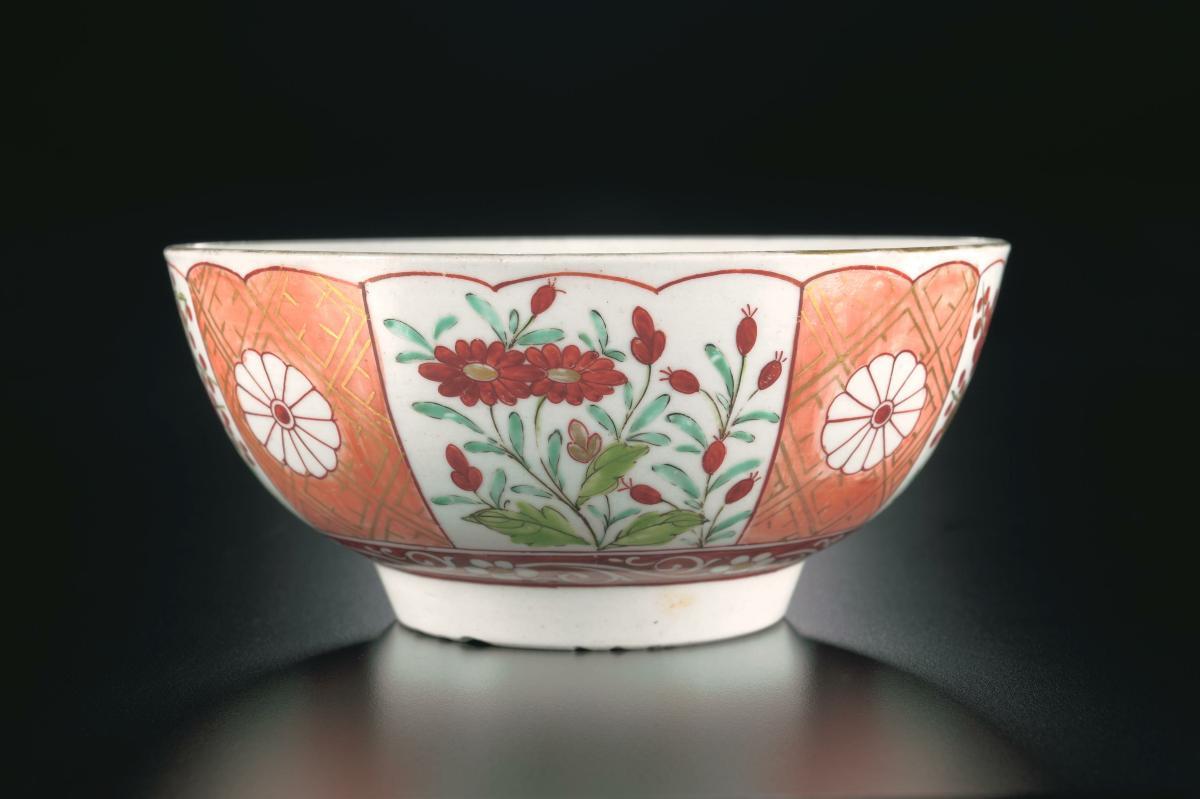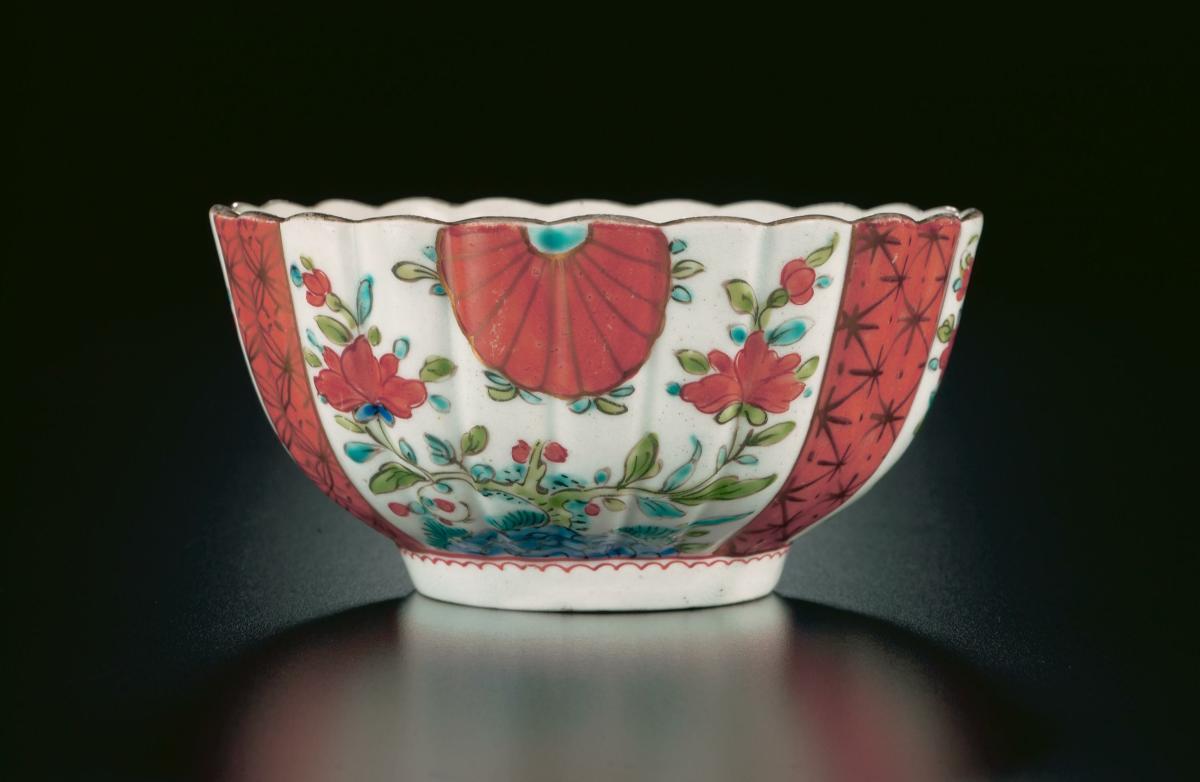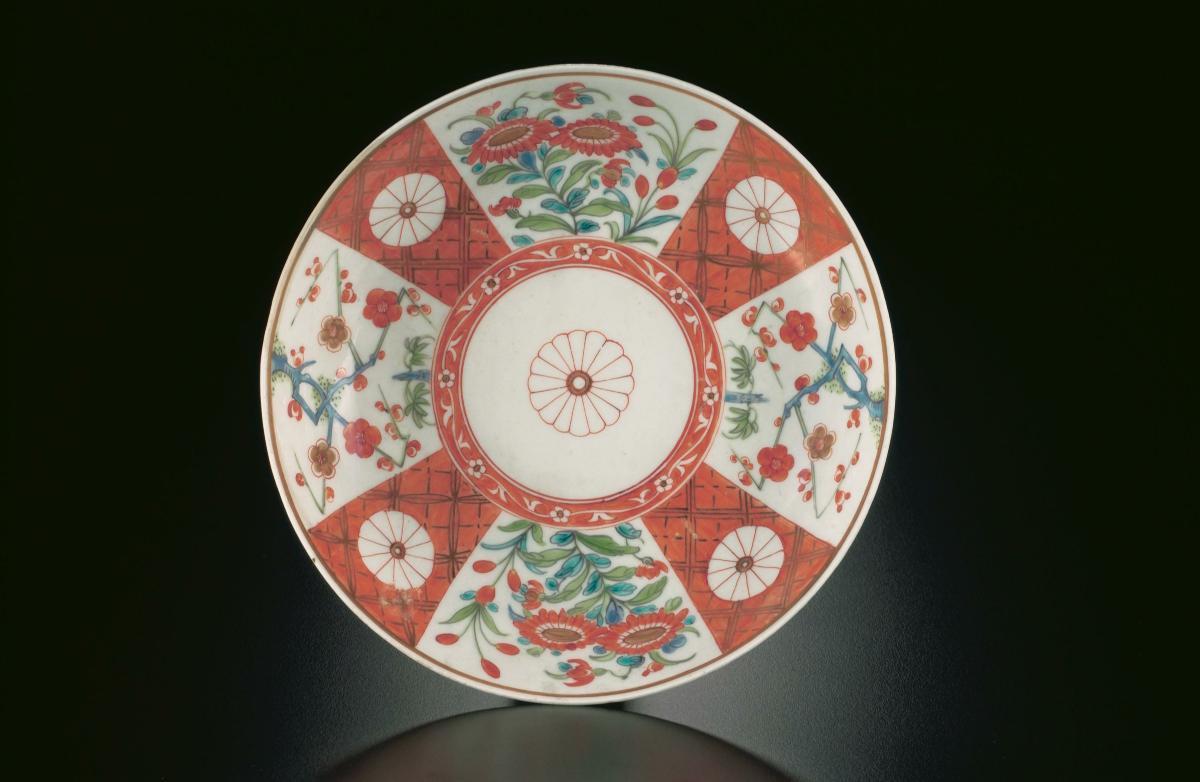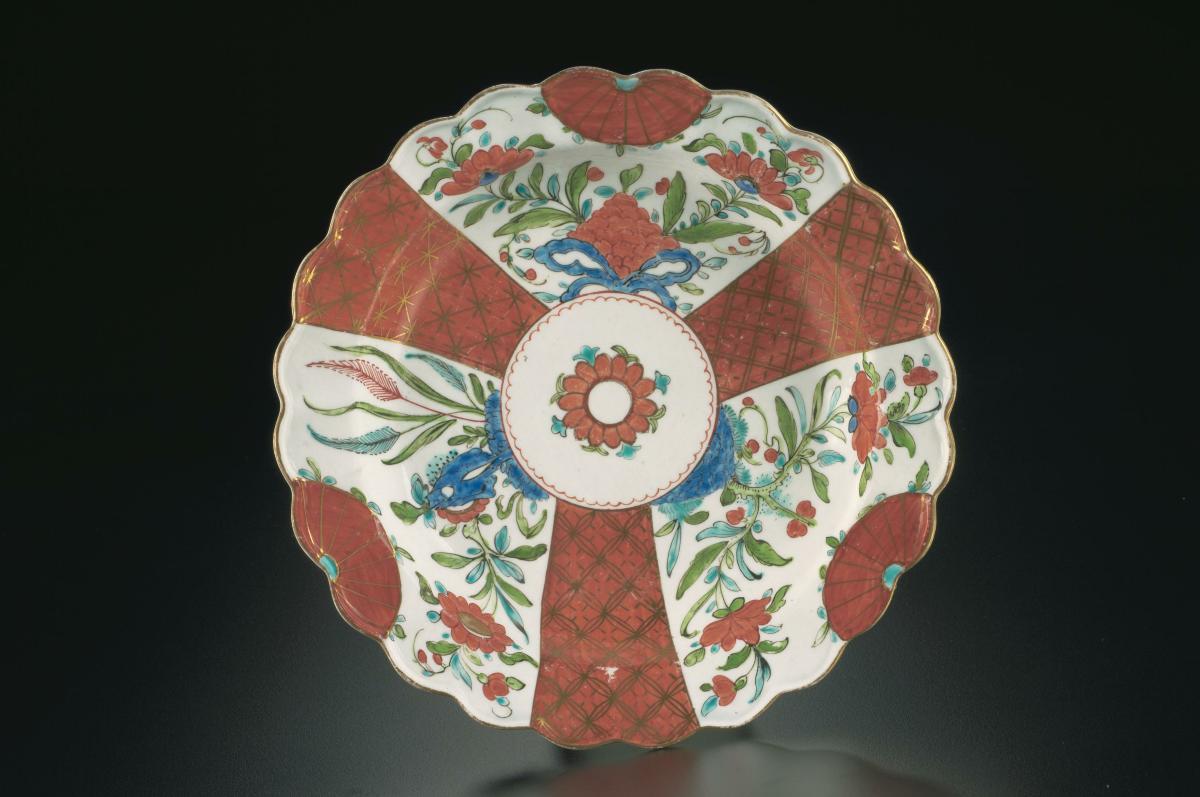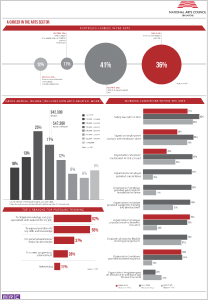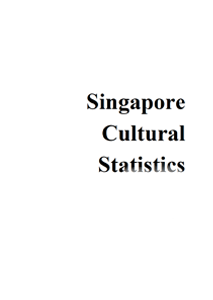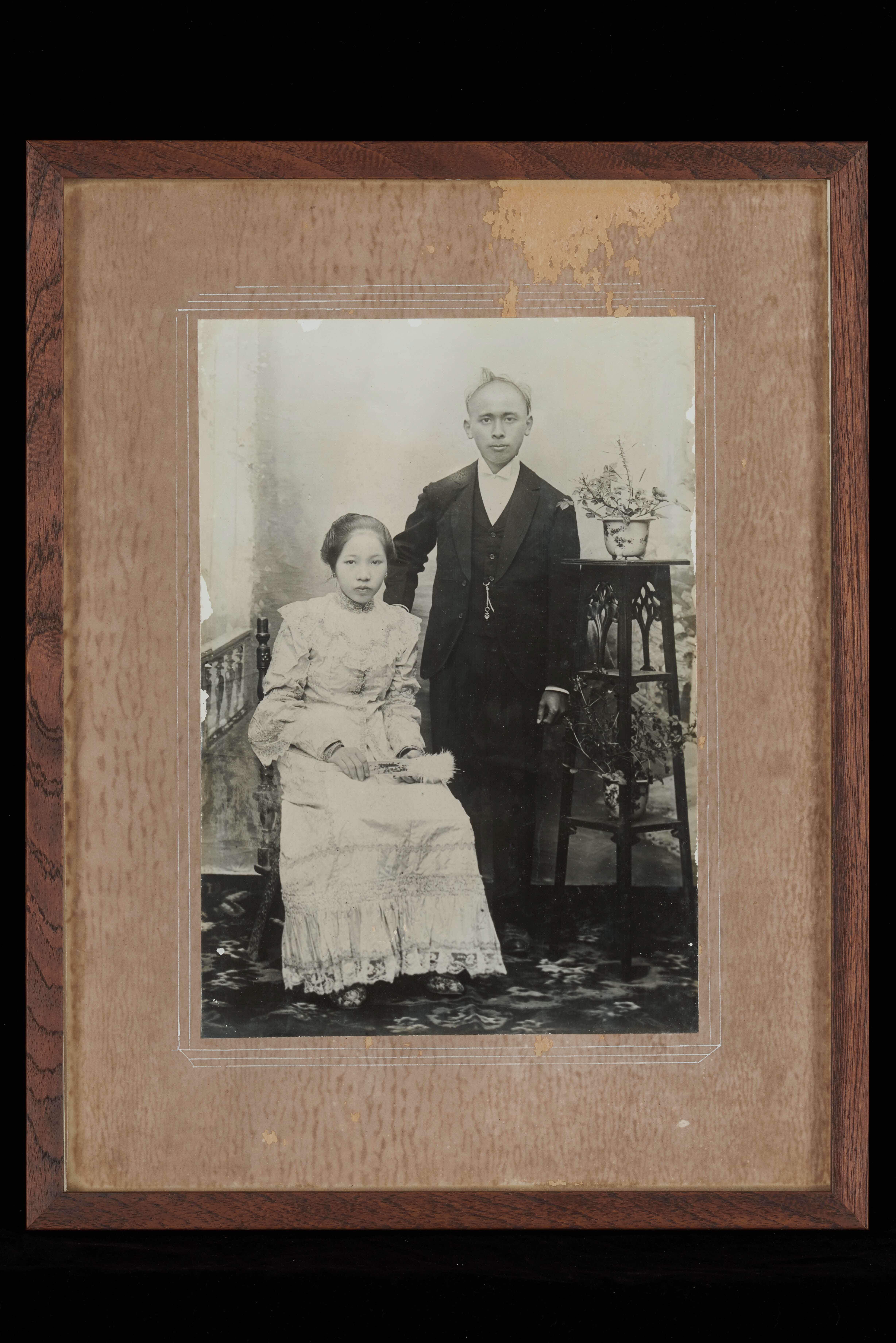This porcelain bowl features a pattern of orange bands with gold diaper motifs and chrysanthemum medallions alternating with floral panels. The flowers are painted in the Kakiemon style, while the orange panels resemble Imari decoration. It has been suggested that a Chinese adaptation of a Japanese design may have served as the source of inspiration for this pattern. This design, known as ‘Scarlet Japan’, was very popular around 1765 to the late 1780s. It was most often used to decorate tea wares. Imari and Kakiemon styles had the greatest impact on European ceramics. Both kinds of porcelain were produced in the area of Arita in present-day Saga prefecture on Kyushu Island. Imari derived its name from the port from where it was shipped, while Kakiemon is named after the potter, Sakaida Kakiemon (1596-1666), who was reputed to have pioneered the use of colour enamels on porcelain in Japan. The range of enamels used on Imari wares is fairly wide but generally consists of blue, red and gold. In contrast to the heavily decorated Imari wares, Kakiemon designs show more restraint. Motifs are finely painted in translucent overglaze enamels with large undecorated areas highlighting the distinctive milky-white body.





